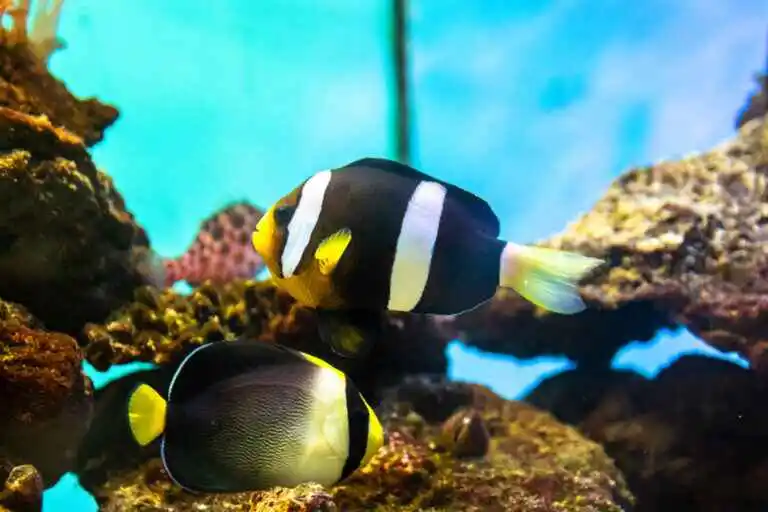
Introduction
During a power failure, the peace and sense of tranquillity underwater can be broken by a flash of lightning which is a common occurrence in fish tanks. As fish enthusiasts, we of course realize that delicate balance is important for the survivability of aquatic life.
However, when the lights go out, questions arise: Even now when we have power, how long can the fish tank go without power? In this centering guide, not only will we find the time we have to act but also many useful strategies for aquatic creatures’ protection. Join us as we go down to the gutters of aquarium life volts on unanticipated obstacles.
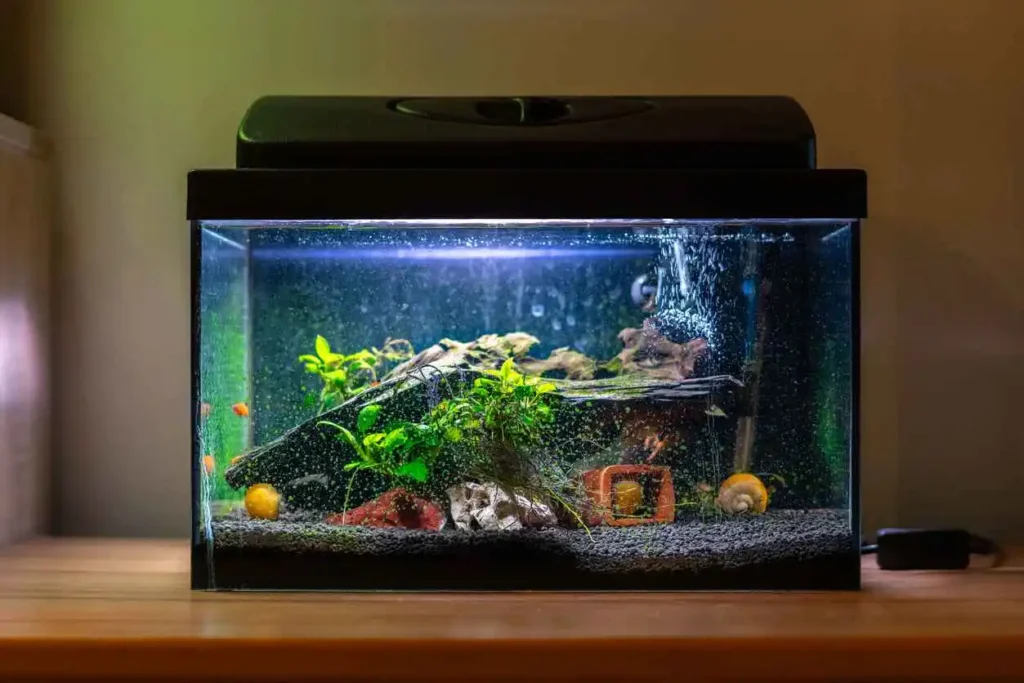
Understanding the Impact of Power Loss on a Fish Tank
The world of fish is all planned according to the connections between them, and losing their power sends a whole chain of disruption in the tank. Without this filtration, waste piles up, and this causes the overflow of ammonia that occurs leading to problems with fish health and fish tanks going without power.
Oxygen levels drop, leaving the fish unable to breathe, and temperature swings confuse their system to a certain point that they might have diseases. On top of that, the lack of light disturbs the natural circadian rhythms, which makes matters worse in the disturbance of the marine ecosystem balance. On the other hand, a blackout can move from a nuisance to a local emergency in the subaqueous area.
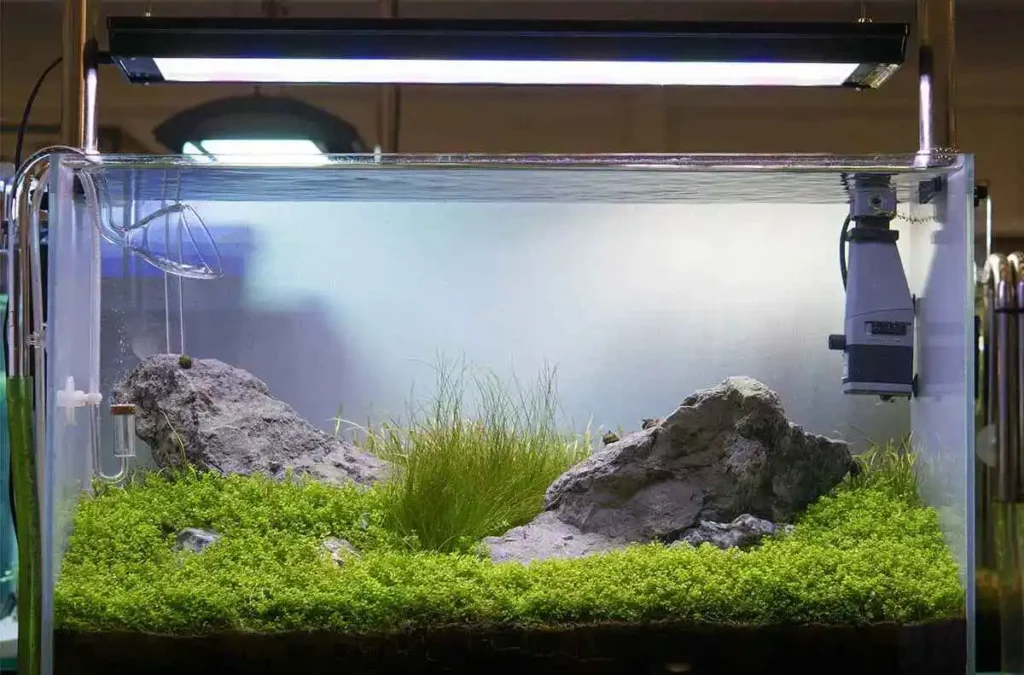
Factors Affecting the Duration of Power Loss Tolerance
Size and Type of Fish Tank
In general, tanks with bigger capacity are believed to have more stable surroundings, as they take longer to make temperature changes and legally cover oxygen needs. Additionally, the type of tank, either keeping freshwater or marine fish, can cause power failure differently as there are different species of fish and different equipment requirements.
Fish Species and Their Specific Requirements
Different types of fishes exhibit different immunities to changes in water conditions which can be altered due to fluctuations in temperature, solubility, and oxygen content. For other species resisting fluctuations proves no problem whereas for others their way of existence depends on certain conditions. Analyzing a fish tank in terms of what it requires from the fish to survive and the fish tank goes without power is an imperative step to determining how threatened these lifeforms are by power failure.
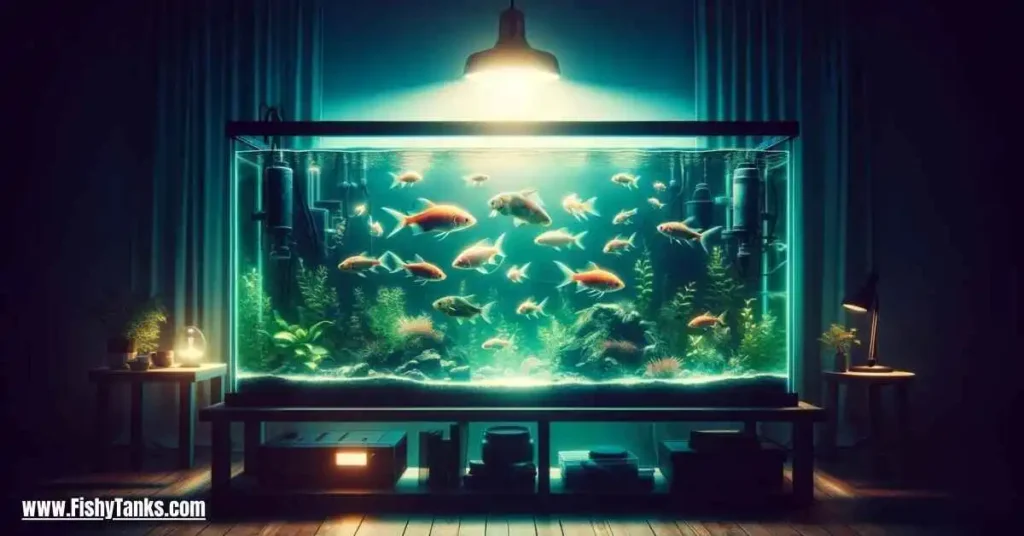
Fish Species and Their Specific Requirements
Different fish species possess different sensitivities towards the modifications in water parameters especially on temperature and changes of oxygen levels. Some species get well adjusted to the changes, certain ones do not tolerate fluctuating environments at all. The unique needs of fish in the aquarium demand the awareness of the fact that affected fish cannot be able to withstand a period of power failure.
Temperature of the Surrounding Environment
Regarding a smaller fish tank, the surrounding ambient temperature will determine the speed by which the temperature of the water will drop in case of a power outage. The faster environment heating process probably means more swings between temperatures; these will add more stress on the fish. In contrast, cool surroundings might as well be a synonym for thermal buffering.

Availability of Backup Equipment or Contingency Plans
Providing backup power sources involving air pumps operated by the batteries or generators can prolong the fish tank’s being out of power for a significant period. Moreover, take-cover-up insulations or alternatives to mechanical aeration are other contingency plans that will minimize the risk of power outages on the tank’s ecosystem.
Immediate Actions to Take When Power Goes Out
Time is of the essence when we are faced with a power outage, hence, quick response is critical. Keep watch on the oscillations of temperatures, provide for appropriate oxygenation, feed less frequently, and attempt to limit the disruptions to the tank in dealing with the outage.
Analyzing the Important Timeframe Without Power
Projecting the right period without power poses a challenge that boils down to the holistic analysis of many elements. Firstly, a major component that determines the state of your aquarium fish regarding temperature fluctuations is their sensitivity.
There are the species that can withstand a wider temperature range and the species that need more precise ambient temperature for normal metabolic processes to function properly. Secondly, you may want to focus on the fish tank going without the power, and oxygen level needed by your fish and the efficacy of the aeration device in your tank.
Lastly, remember adding a filtration system to maintain clean water and to remove waste wash. Secondly, a redundant power system, such as battery backup or contingency plans could be included in the strategy of backup power sources, to ensure some buffer during a power crisis.
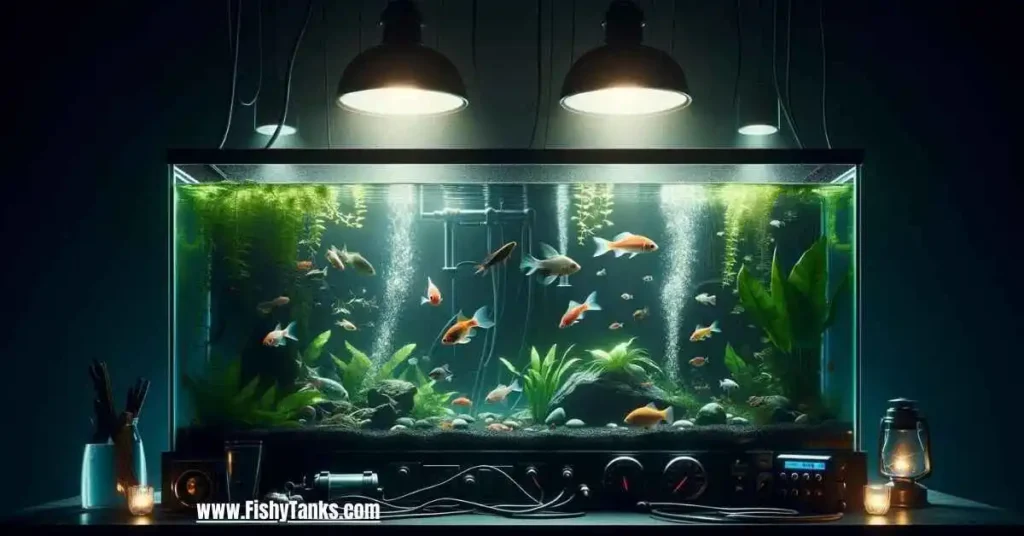
Dealing with Power Outages
When one experiences an unexpected long power disruption, fish keepers have to come up with practical solutions to prevent the effects of aquarium disruptions. A much more efficient way is to supply an unshakable fixed source of power how long can a fish tank go without power? a retainer generator, or a standby UPS system.
Hydro turbines might work as the central power plants, creating flows of energy that feed into crucial equipment, including filtration systems and heater streams, guaranteeing that water conditions and temperature are kept constant.
The ancillary approach should also involve the use of manual methods like frequent water replacement or the use of battery-operated air pumps for oxygen level control. Also, another thing that needs to be done is insulating the aquarium with materials like foam or blankets so that the heat can be retained and fluctuations in temperature during protracted blackouts are kept to a minimum.
Moreover, forming contingency plans that could be used such as accommodating the fish for the unforeseen circumstances in another tank or contacting the other fishkeeping communities for assistance will ensure that the fish will be safe.
Conclusion
Proper fishkeeping requires understanding the risks that an aquarium may face during power failure. Those aspects like tank size, fish species, and emergency supply systems are what we should take into account before the worst comes to us.
Employing capable backup power sources, developing alternative aeration technologies, and keeping contingency plans ready are the best methods against power outage effects. We discuss how long can a fish tank go without power. By being proactive and more resilient, we can safeguard and secure the welfare of our aquatic animals. Being that our main objective is to continually preserve and upkeep our tanks, kindly pay attention to their marine life.
FAQ’s
How Long Can a Fish Tank Go Without Power?
The period during which your fish tank’s power supply is insufficient may depend on variables including tank size, the species of fish, and the environmental conditions. Applicably, small tanks are not programmed for long operation because they can run out of power in 2 hours but the big tanks with reserve systems can go longer since they are programmed for longer.
What should I do if the power goes out in my fish tank?
First and foremost, closely monitor the temperature using the thermometer. If it fluctuates, reduce feeding and make sure that there is enough oxygen by either using battery-powered pumps or manually agitating the water surface. Consider installing a backup power source system in the occasion the blackout continues.
Do I need a backup power source for my aquarium?
It is considered highly advisable to have a backup power source, either a generator or a power pump that is battery-operated, to make sure that the principal functions of the tank remain uninterrupted during power outages. It can be of great help in the keeping of oxygen levels and water circulation processes, for the species there to live.
How can I keep my fish safe during a power outage?
When fish safety is a concern during a power outage, you should look out for keepable water parameters, primarily stable temperature and oxygenation levels. For now, you may consider the installation of backup equipment, using manual aeration systems, or have plans for emergency relief.
Also Must Read: What Temperature Should a Betta Fish Tank Be?